Do you have a question about the Philips 32PFL3514D and is the answer not in the manual?
Important safety instructions for operating the equipment.
FCC compliance information for digital devices.
Contact information for customer support services.
Guidelines for cleaning and maintaining the TV screen.
Information on product recycling and battery disposal.
Important safety warnings and compliance information.
Location and function of TV physical buttons.
Overview and functions of the TV remote control.
Guidance on placing the television safely and optimally.
Step-by-step guide to inserting batteries into the remote.
Instructions for connecting TV to antenna or cable sources.
Instructions for connecting the AC power cord to the TV.
Guidance on organizing TV cables for tidiness.
Initial steps to power on and configure the TV.
How to turn the TV on, off, or put it into standby mode.
Methods for changing television channels using the remote.
How to control the TV's audio volume level.
Steps to view channels from an external set-top box.
Instructions for playing a DVD disc on the TV.
Adjusting picture and sound parameters for optimal viewing.
Configuring TV settings for PC input via HDMI.
How to select different display aspect ratios.
Adjusting various audio settings like equalizer and volume leveling.
Selecting predefined picture settings for different content.
Selecting predefined sound settings for different content.
Setting a timer for the TV to automatically switch to standby.
Choosing the preferred language for the TV menu interface.
Configuring the TV's location setting for optimal performance.
Process for automatically scanning and installing available TV channels.
Managing the list of available TV channels.
Manually adding channels not found during automatic scan.
Improving reception quality for antenna-based channels.
Equipment and preparation required for TV software updates.
How to view the current software version installed on the TV.
Instructions for downloading TV software updates from the Philips website.
Step-by-step guide to installing software updates via USB.
Diagrams showing input/output ports on the TV models.
Guidance on choosing connection types for optimal signal quality.
Troubleshooting steps for no power or indicator light on the TV.
Resolving error messages related to HDMI connection and HDCP.
Solutions for when the TV does not respond to remote control commands.
Fixing picture distortion, stretching, or black bars.
Steps to take when there is no picture or sound from the TV.
Instructions for downloading a digital copy of the user manual.
Information on supported file formats and potential issues with USB content.
Troubleshooting tips for connecting digital cameras to the TV.
Requirements and compatibility for USB memory devices.
Details on TV display features like resolution and brightness.
Specifications for various input and output connection types.
Information on TV audio features like power output and equalizer.
Details on video modes, PC input, and media playback capabilities.
Power requirements and specifications for the TV.
Overview of the terms and conditions of the limited warranty.
Identification of who is eligible for the product warranty.
Details on what defects and repairs are covered under warranty.
Exclusions and limitations of the product warranty coverage.
| aspect ratio | Widescreen |
|---|---|
| brightness | 360 cd/m² |
| contrast ratio | 2500:1 |
| dynamic screen contrast | 10000:1 |
| response time | 8 ms |
| viewing angle | 170º (H) / 170º (V) |
| diagonal screen size | 32 inch / 81 cm |
| visible screen diagonal | 31.5 inch |
| panel resolution | 1366 x 768p |
| computer format resolutions | 640 x 480, 720 x 480, 800 x 600, 1024 x 768, 1280 x 768, 1360 x 768 at 60Hz |
|---|---|
| video format resolutions | 480i, 480p, 720p, 1080i at 60Hz |
| equalizer | 5-bands |
|---|---|
| output power (RMS) | 2 x 10W |
| sound system | Dolby Digital (AC-3), Stereo, SAP |
| ambient temperature | 5 °C to 35 °C |
|---|---|
| mains power | 120V/60Hz |
| power consumption | 155 W |
| standby power consumption | < 0.5 W |
| AV 1 | Audio L/R in, YPbPr |
|---|---|
| front / side connections | HDMI v1.3, S-video in, CVBS in, Audio L/R in, USB |
| audio output - digital | Coaxial (cinch) |
| HDMI 1 | HDMI v1.3, Analog audio L/R in |
| HDMI 2 | HDMI v1.3 |
| set dimensions | 30.8 x 20.3 x 3.8 inch |
|---|---|
| set dimensions with stand | 30.8 x 22.5 x 8.7 inch |
| weight including packaging | 26.1 lb |
| product weight | 19.2 lb |
| product weight with stand | 20.8 lb |
| box dimensions | 35.9 x 24.8 x 9.0 inch |
| VESA wall mount compatible | 200 x 200 mm |
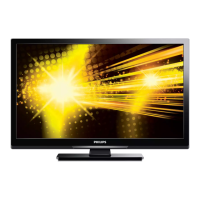

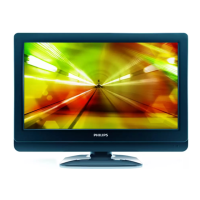

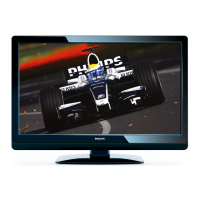



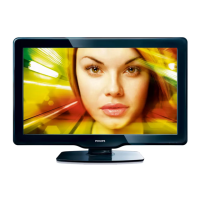

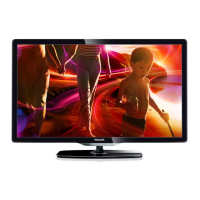

